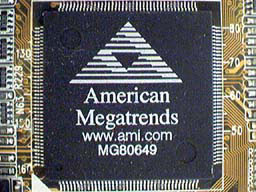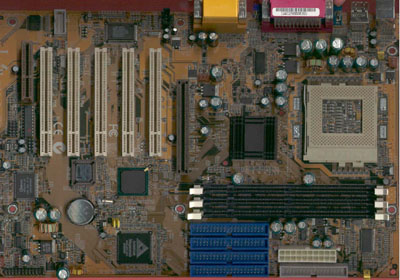Iwill WO2-R Socket 370 i815E + RAID ATX
by Henry Kuo on November 7, 2000 1:04 AM EST- Posted in
- Motherboards
Around this time last year, we were very busy running benchmarks on different BX boards. Most motherboard manufacturers were trying to push out their "last" series of BX boards before the long overdue i820 chipset. We put "last" in quotes because the i820 chipset wasn't out for long before it became clear that the 440BX chipset still had quite a bit of life left. This summer marked the release of another Intel chipset, but things have changed quite a bit this time around. Since the BX chipset really is getting old and Intel is making the i815 chipset their flagship model, we're seeing more and more i815 motherboards emerging on a regular basis. The i815 chipset might not outperform the 440BX chipset in every situation, but its support for 133MHz FSB, 1/2 AGP bus divider, AGP 4X, Intel's Hub Architecture, and more, means that just about every manufacturer is making an i815-based product.
Another noticeable change between one year ago and today is the evolution of RAID. One year ago, RAID seemed to be a luxury destined solely for high-end servers and workstations. Since that time, the accessibility of RAID has increased dramatically thanks to the widespread availability of inexpensive IDE RAID controllers. At the same time, RAID controllers began appearing on quite a few motherboards. More people start using RAID to either increase performance or reliability, or both, as the price of the controllers and drives continue to drop.
RAID controllers have appeared on motherboards using many different chipsets, including the Intel 440BX and the VIA KT133. It was just a matter of time before RAID controllers started appearing on i815/i815E motherboards. And Iwill, who has been a big supporter of Intel and RAID, happens to be the first company to ship us their i815E motherboard with an on-board RAID controller, the WO2-R.
|
Iwill WO2-R |
|
|
CPU
Interface
|
Socket-370
|
|
Chipset
|
Intel
i815E
|
|
Form
Factor
|
ATX
|
|
Bus
Speeds
|
66 - 200 MHz (1 MHz increments) |
|
Voltages
Supported
|
Auto Detect / +5% / +10% |
|
Memory
Slots
|
3
168-pin DIMM Slots
|
|
Expansion
Slots
|
1
AGP Slot |
|
On-board
Audio
|
C-Media
CMI-8738 3D 4.1 Hardware Sound
|
|
BIOS
|
Award Modular BIOS 6.00PGN |
The Good
Usually when a motherboard has some extra features like an additional drive controller, the size of the board will increase quite a bit, so that the manufacturer can make room for the additional components and route the traces properly. To our surprise, the WO2-R's PCB measure just 12 by 8.5 inches, which is about the same size as most other i815/815E motherboards out there. In general, a smaller PCB means lower production costs, which can often lead to lower prices for the end user.
The next thing we noticed about the layout is the ATX power supply connector. It is placed in the front of the board, together with the floppy drive connector and the IDE connectors. First of all, this is great news since the power cables will not need to run over the CPU and memory, so it will not block airflow. As processors get hotter with higher clock speeds, this can become a significant cooling issue. On the other hand, since the power supply connector is so close to the other connectors, when everything is seated inside the case, all the IDE cables, floppy cable, and the power cables will run together. At this point the best place for the connector is still the right edge of the board, but Iwill has done a pretty good job in placing the power supply connector.
When it comes to the ATA 100 RAID controller, Iwill goes to one of the biggest names in the industry, American Megatrends. The American Megatrends HG80649 controller sits at the front of the motherboard and supports two Ultra ATA 100 channels, which means users can connect up to four Ultra ATA 100 devices (two devices per channel). Like most common IDE RAID controllers, the AMI controller supports RAID 0, 1, and 0+1 functions, which are the most popular options nowadays. The absence of RAID 5 support is another indicator that while IDE RAID may be an interesting arena to toy in, it is still far from the level of performance and especially reliability of hardware SCSI RAID 5 solutions. Unlike most motherboards, where users have to choose SCSI as the boot drive in the BIOS, users actually have a choice of RAID100 as the boot drive. This should clear up quite a bit of confusion.













0 Comments
View All Comments